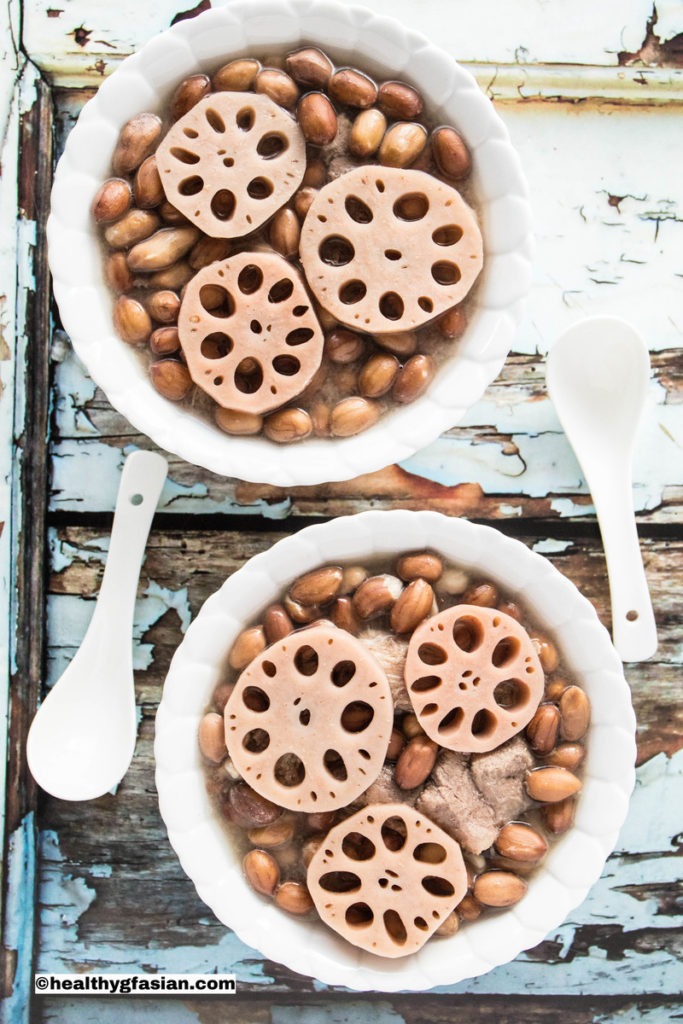Chinese Lotus Root and Pork Soup is one of the most common and popular Chinese home cooking soup. They also called this soup Leng Ngau Tong in Cantonese. Most of us in a Chinese household would have fond memories of having this lotus soup regularly while growing up. This lotus root and pork soup is not only very simple to prepare but tasty with high nutritional values too. Traditionally, we make with fresh lotus roots, pork spare ribs, dried cuttlefish and red dates. We also frequently add some raw peanuts with skin on and dried goji berries to this soup.
In fact, lotus root and pork soup is a celebratory soup for Chinese New Year. As lotus root means wealth and prosperity for every year. Likewise, some Cantonese restaurants serve this soup as a free courtesy soup before the main meals. For my naturally gluten free lotus root and pork soup recipe, I am using bone on pork shoulder. Plus frozen lotus root, raw peanuts with skin on and red dates. This recipe is also low carb, dairy free, soy free, corn free and egg free.
Furthermore, you can make this lotus root soup nut free without the peanuts if you have nut allergy. Just substitute with 2 tablespoons dried goji berries instead. In addition, I have included two cooking methods for this lotus root soup. Namely, using either a pressure cooker or a pot on stove top.
You may also like my other soup recipes:
- Chinese Chicken and Black Eyed Peas Soup;
- Chinese Pork and Black Bean Soup;
- Homemade Fish Balls with Seaweed Soup; and
- Pork and Prawn Wonton Soup
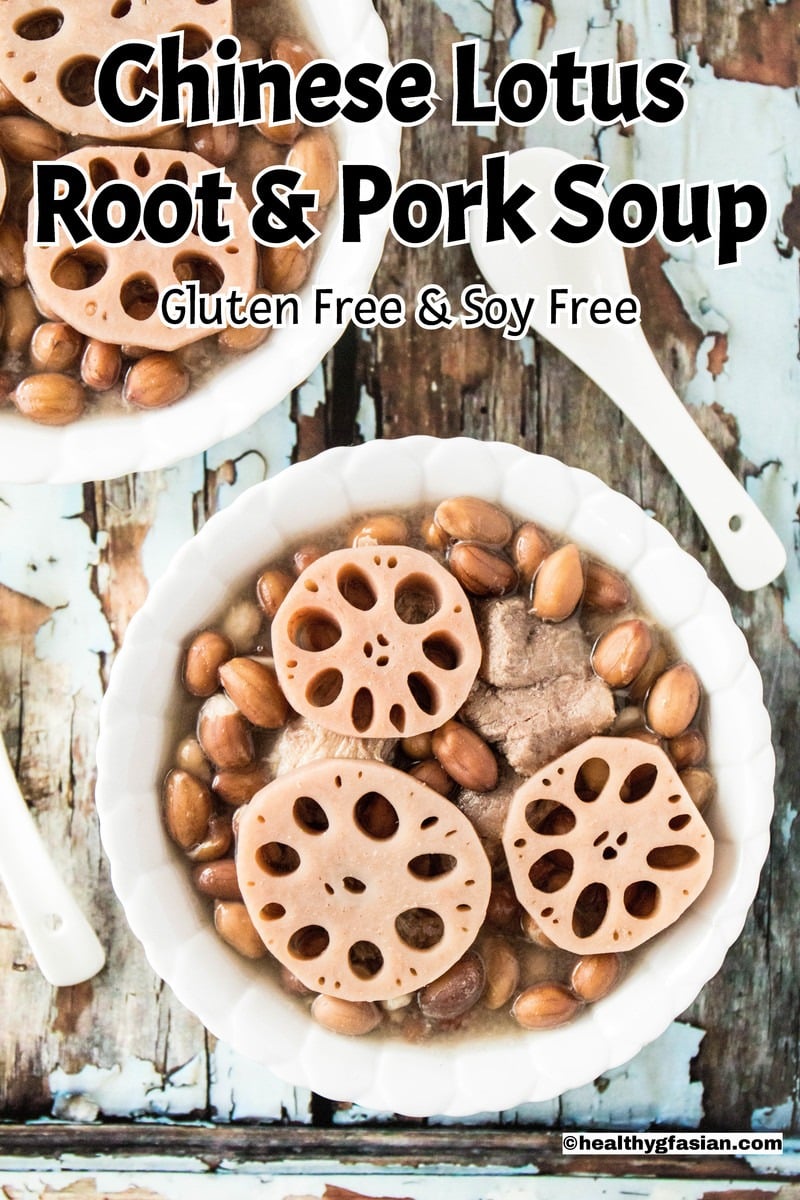
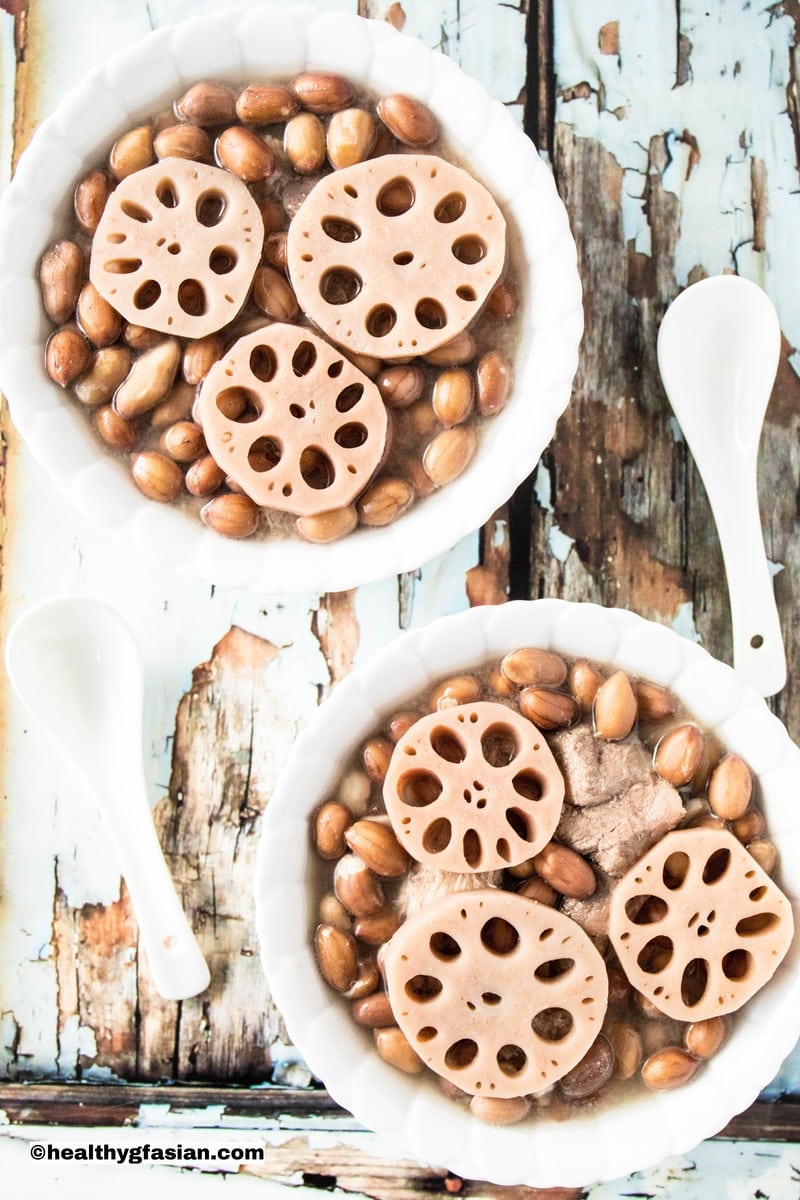
What is Lotus Root?
Lotus root (Nelumbo nucifera) or renkon in Japan, is an edible rhizome (the subterranean stem). Likewise, it is an aquatic perennial plant that produces white or pink flowers. And it is part of the Nelumbonaceae family. Moreover, the Hindus and Buddhists believe that Lotus root is holy. Because of this, many commonly referred to lotus root as Sacred Lotus, Sacred Water Lotus and Chinese Arrowroot. Nearly the whole plant is edible including its seeds, leaves, flowers and tubers. In addition, lotus root plant grow in the mud of ponds, swamplands and flooded fields.
Lotus roots are cylindrical in shape and brown in colour. But once sliced across, it looks like wheel shaped with small holes. Likewise, they are crunchy and starchy with sweet and mild nutty flavour. The young lotus roots are more delicate and mainly consumed for culinary uses. Whereas, they usually dry and package the mature lotus roots. Similarly, you can purchase lotus root peeled and packed in brine, frozen or dried. Albeit, many people use lotus root as an ingredient in soups, stir-fries, salads, steam or braise dishes. Alternatively, you can fry lotus root as tempura or crispy chips.
Where and How to Purchase
Lotus roots are available all year round either fresh, frozen or dried at Asian groceries stores. As well as fresh at wet or farmers markets. When purchasing fresh lotus roots, choose roots that are vibrant brownish colour. As well as stout and heavy with firm texture and smooth skin with on blemishes. You need to thoroughly wash and clean lotus root as fresh lotus roots grow in mud. It is also important to consume only cooked lotus roots to prevent any parasitic contamination.
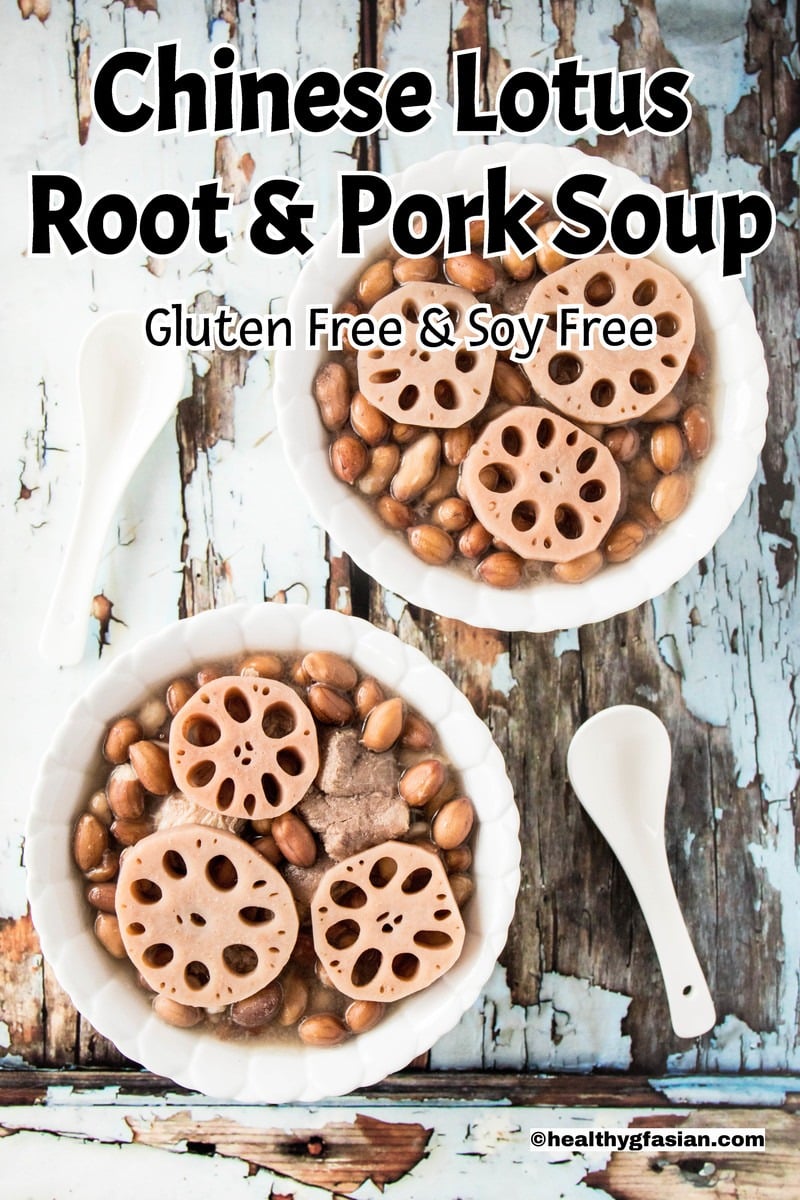
Unusual Characteristic
One unusual element about lotus root is when consuming the stems, as you bite into them. You will detect some stringy lotus fibres that resemble spider webs. Equally, they are long fibre strands that are soft and delicate threads. In Myanmar, they create lotus fibres and make them into exclusive robes for senior monks for their yearly Buddhist celebration.
The fabric produced from lotus fibre bear a resemblance to a hybrid of silk and linen. Nonetheless, naturally stain-resistant, waterproof and soft to the touch. Today, luxury goods brands and high end fashion houses or designers worldwide are also researching the characteristics of lotus fibre. Because they can sell clothing made from lotus fibre at a premium price.
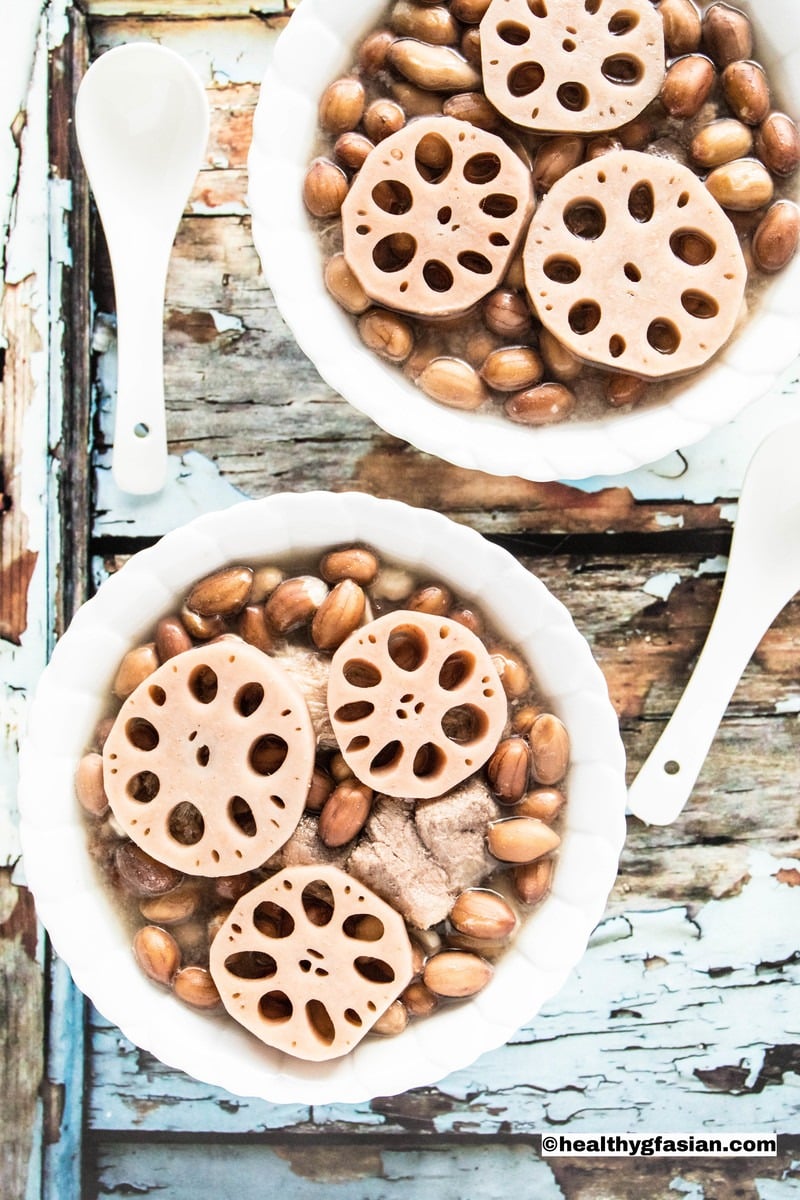
Nutritional Values of Lotus Root
Lotus roots are rich in dietary fiber, very low in cholesterol and saturated fats. Besides, they are a good source of essential vitamins and minerals. Specifically, vitamin B1 (thiamine), vitamin B2 (riboflavin), vitamin B6 (pyridoxine), copper, manganese, phosphorus and potassium. Traditional Chinese Medicine practitioners use lotus roots extensively to cure bleeding like nose bleed, vomiting of blood and diarrhea. They have also demonstrated to have anti-inflammatory, anti-fungal, anti-pyretic (reduce and treat fever) and anti-anxiety properties.
Health Benefits of Lotus Root
Overall, the health benefits of lotus roots may include:
- Promote healthy digestive system and regular bowel movements;
- Boost the immune system;
- Help regulate blood circulation and blood sugar level;
- Reduce risks of cardiovascular disease;
- Aid in weight loss management;
- Assist in lowering cholesterols level;
- Help in stress reduction; support mental health;
- Prevents water retention; promote healthy skin and hair; and
- Support healthy bones.
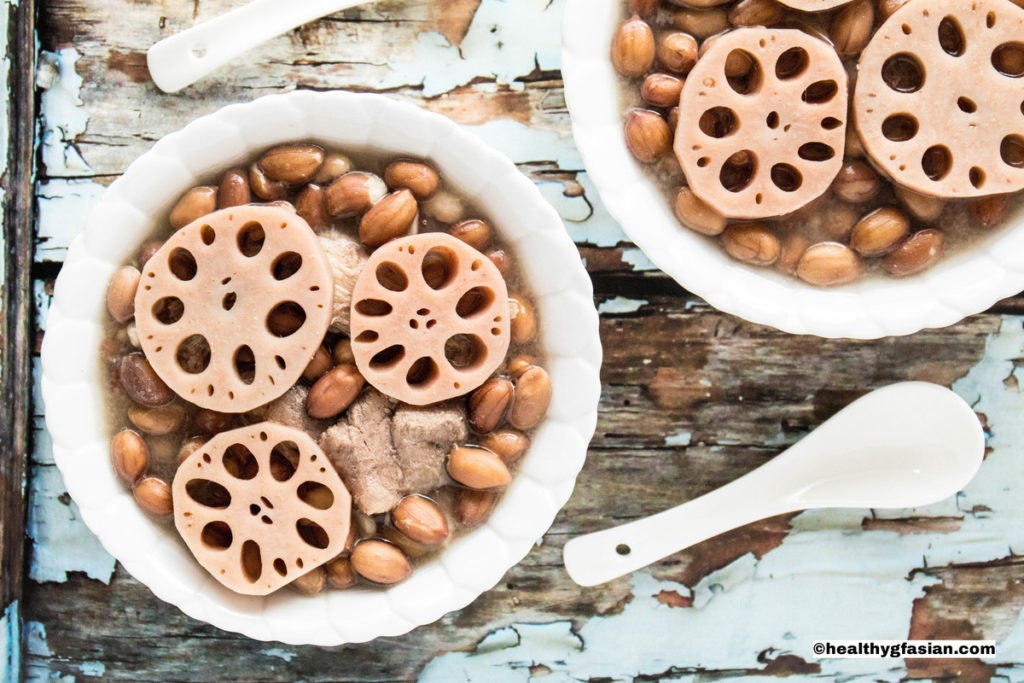
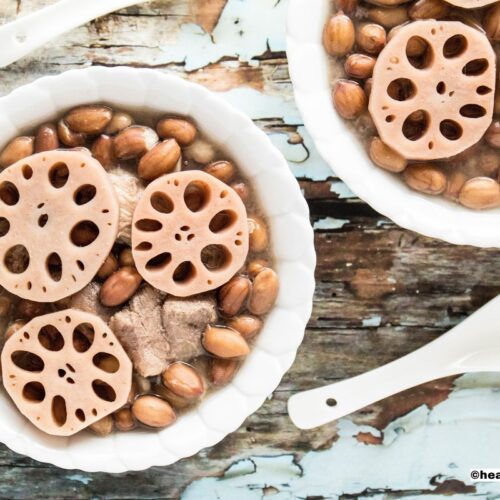
Chinese Lotus Root and Pork Soup
Ingredients
- 1 kg pork shoulder bones on (get your butcher to cut into large 3 inch pieces)
- 400 g fresh or frozen lotus root slices (for fresh lotus root, peeled, washed and sliced into 1cm thick slices lengthwise)
- 350 g raw peanuts skin on
- 10 dried red dates seeded
- 4 litres water
- 2 teaspoons salt or to taste
Instructions
Method 1 – Instant Pot Using Pressure Cooker Function:
- Place pork, lotus root, raw peanuts and dried red dates into a large instant pot. Gently mix the ingredients well together.
- Add water to maximum level indicated by the instant pot. Cover the instant pot and lock lid.
- Using the pressure cooker function. Cook for 35 minutes. Then turn off the heat.
- Let the instant pot rest for another 10 minutes, carefully release pressure. Unlock lid and add salt to taste and serve.
Method 2 – Stove Top Cooking:
- Blanch pork in some boiling water to remove scum. Drain and set aside.
- Place 4 litres of water into a large covered pot and bring to a boil.
- Add raw peanuts and dried red dates and bring to a boil again. Then turn the heat to low and simmer for 30 minutes.
- Then add pork and lotus root and bring to a boil again. Then turn the heat to low and continue to simmer for 1½ hours or until pork and raw peanuts are soft. Add salt to taste and serve.
Recommended Products
Notes
